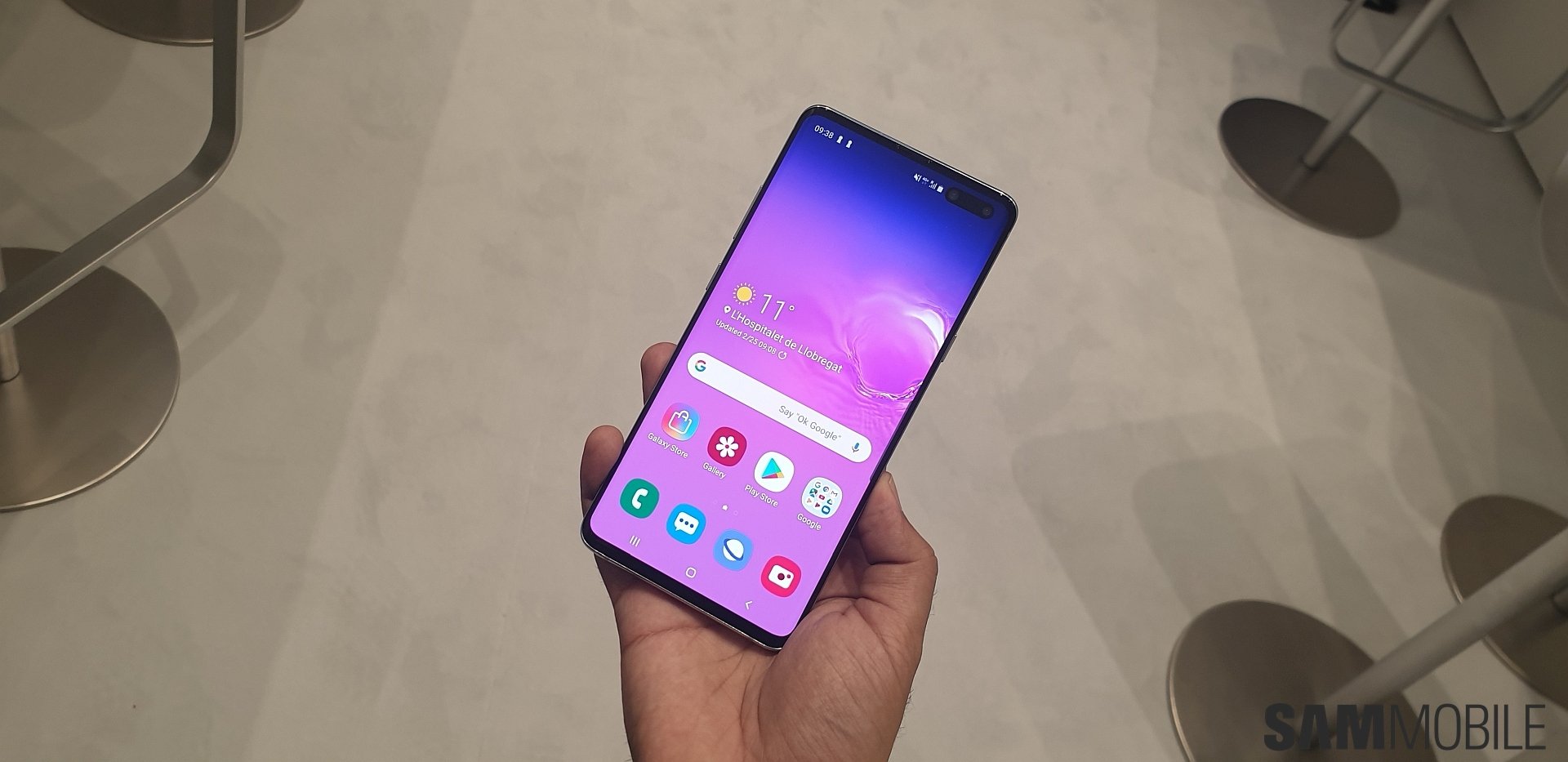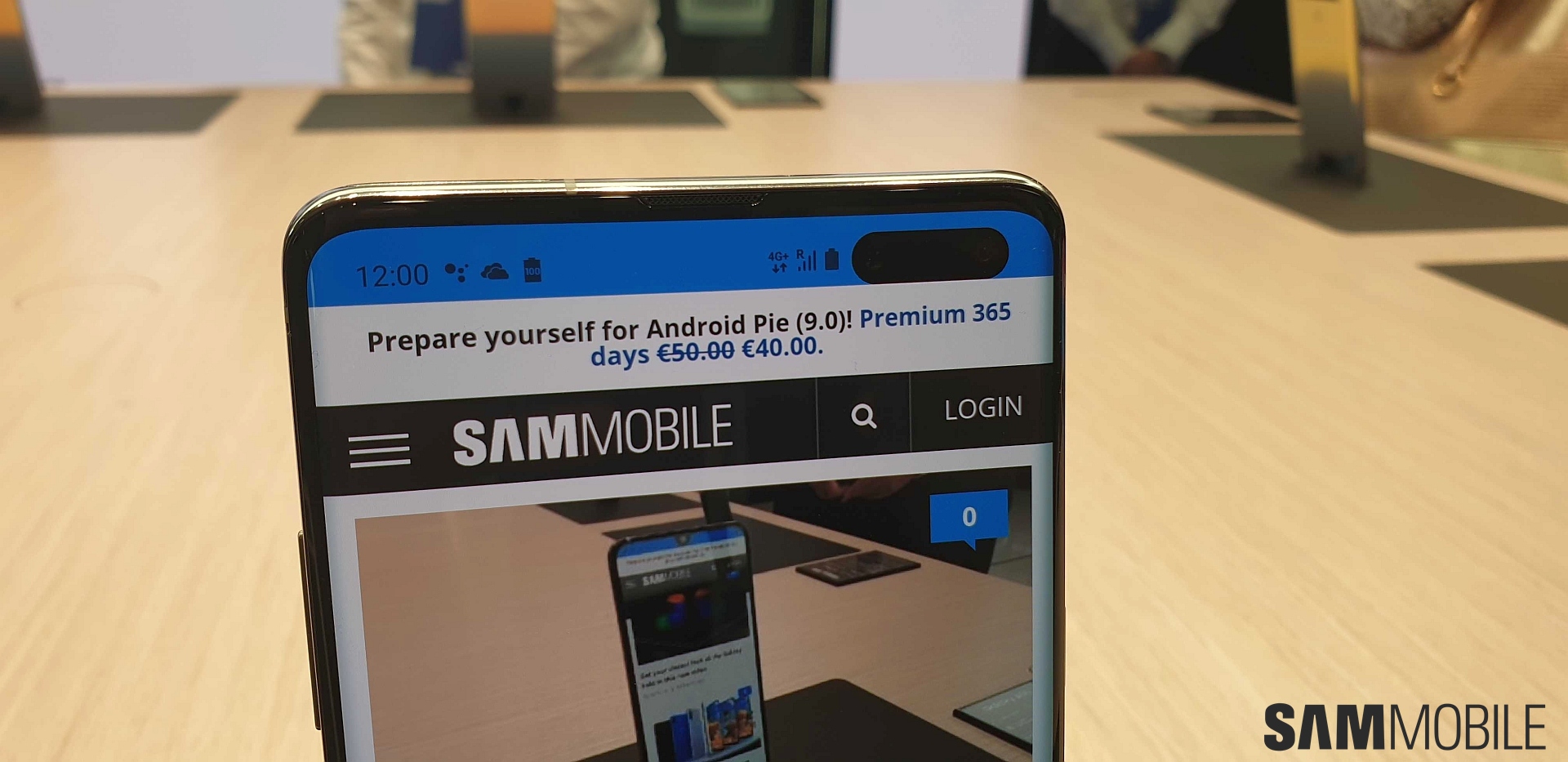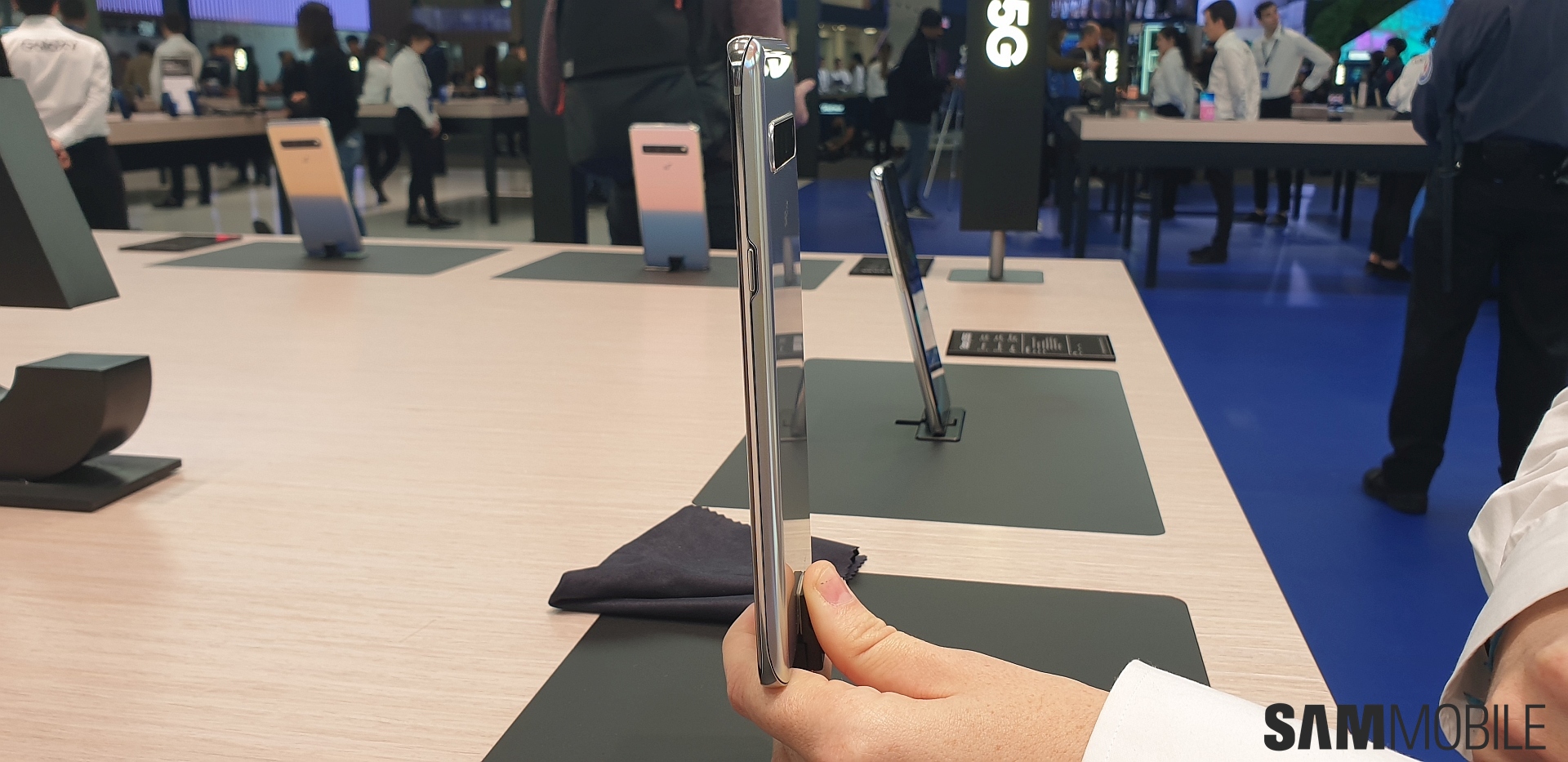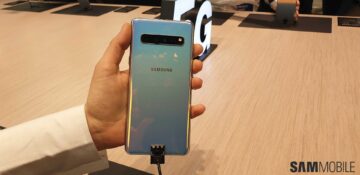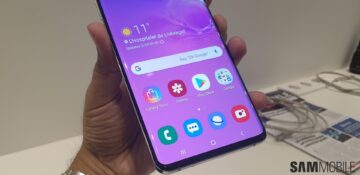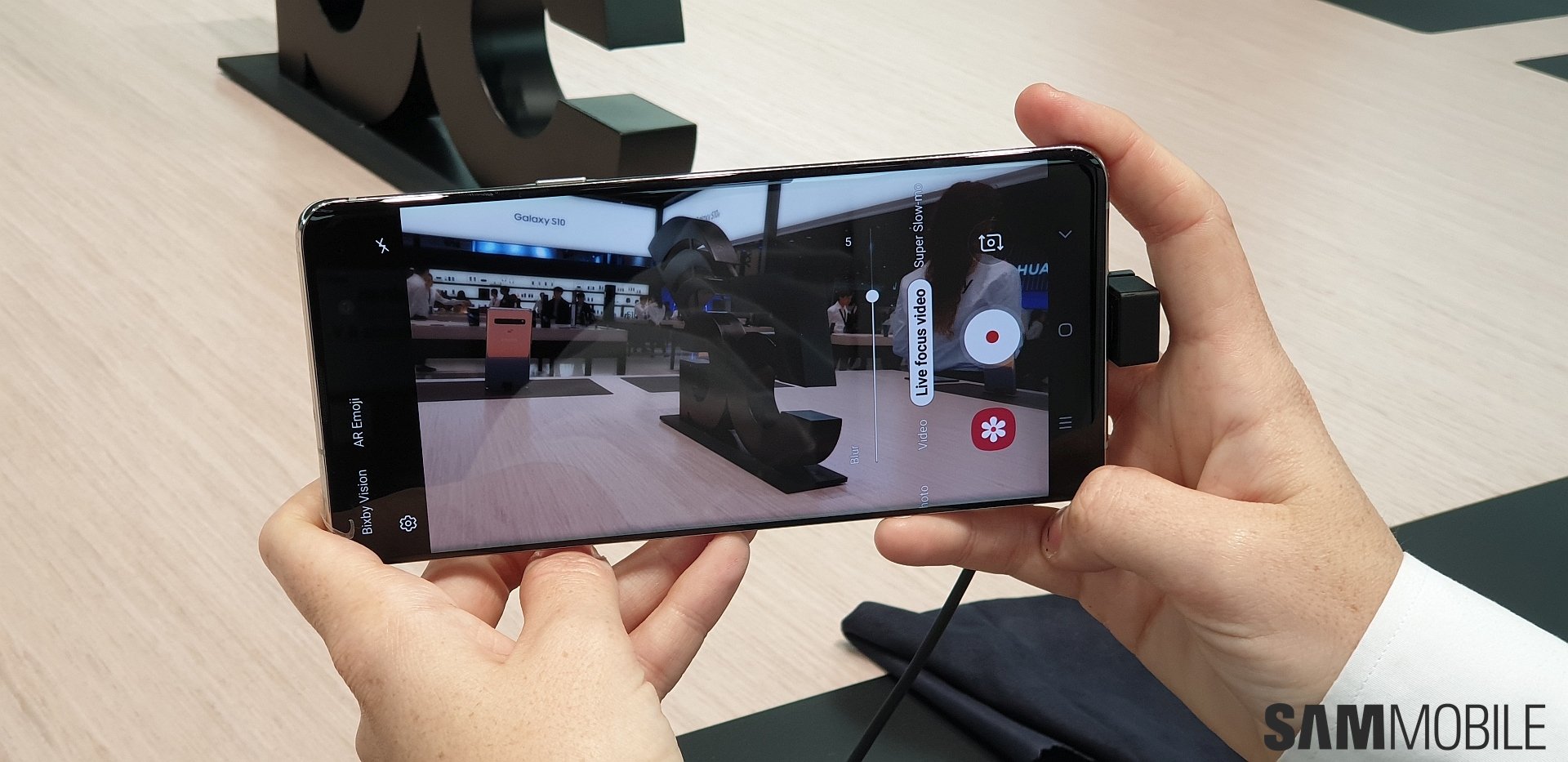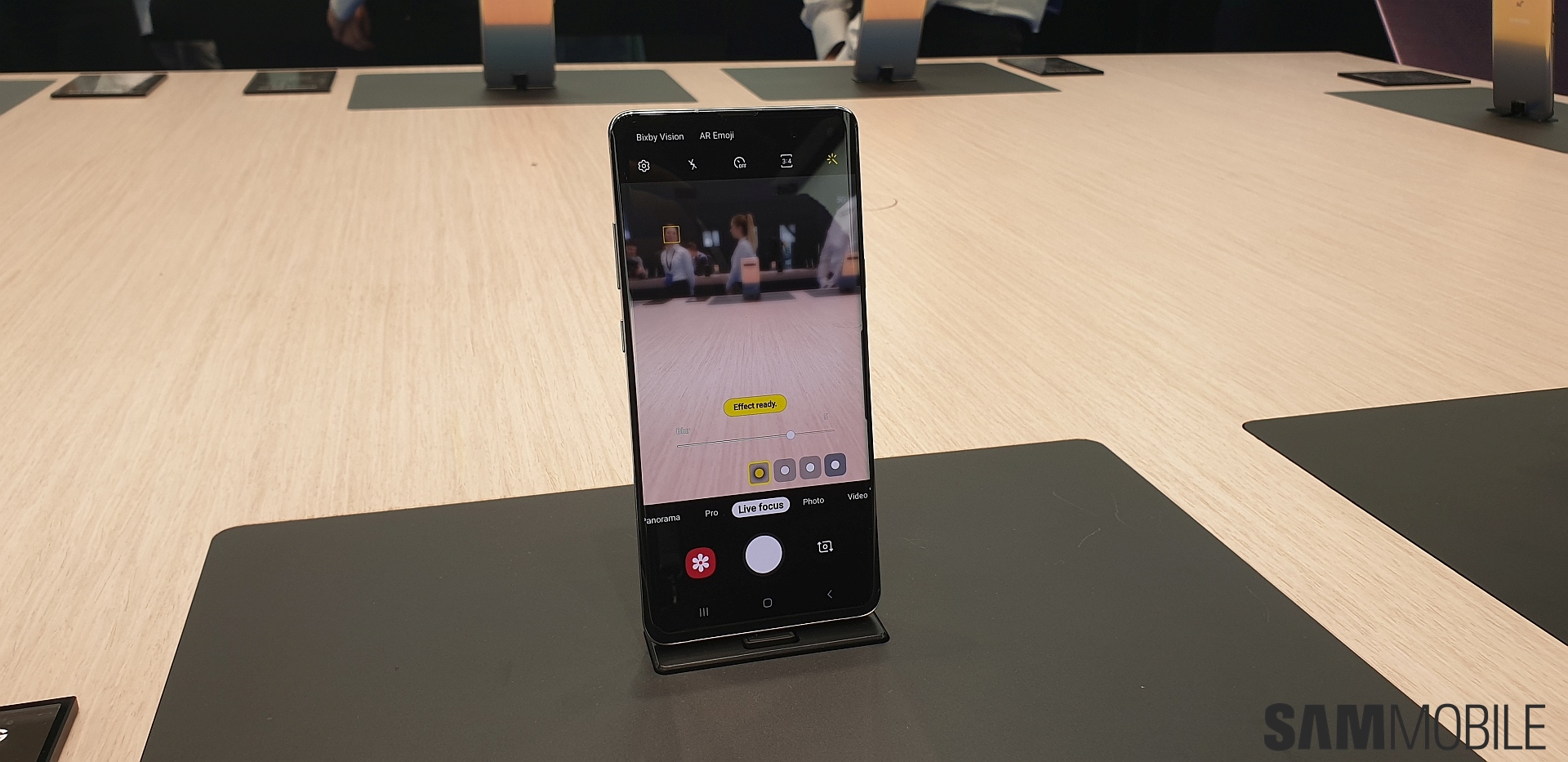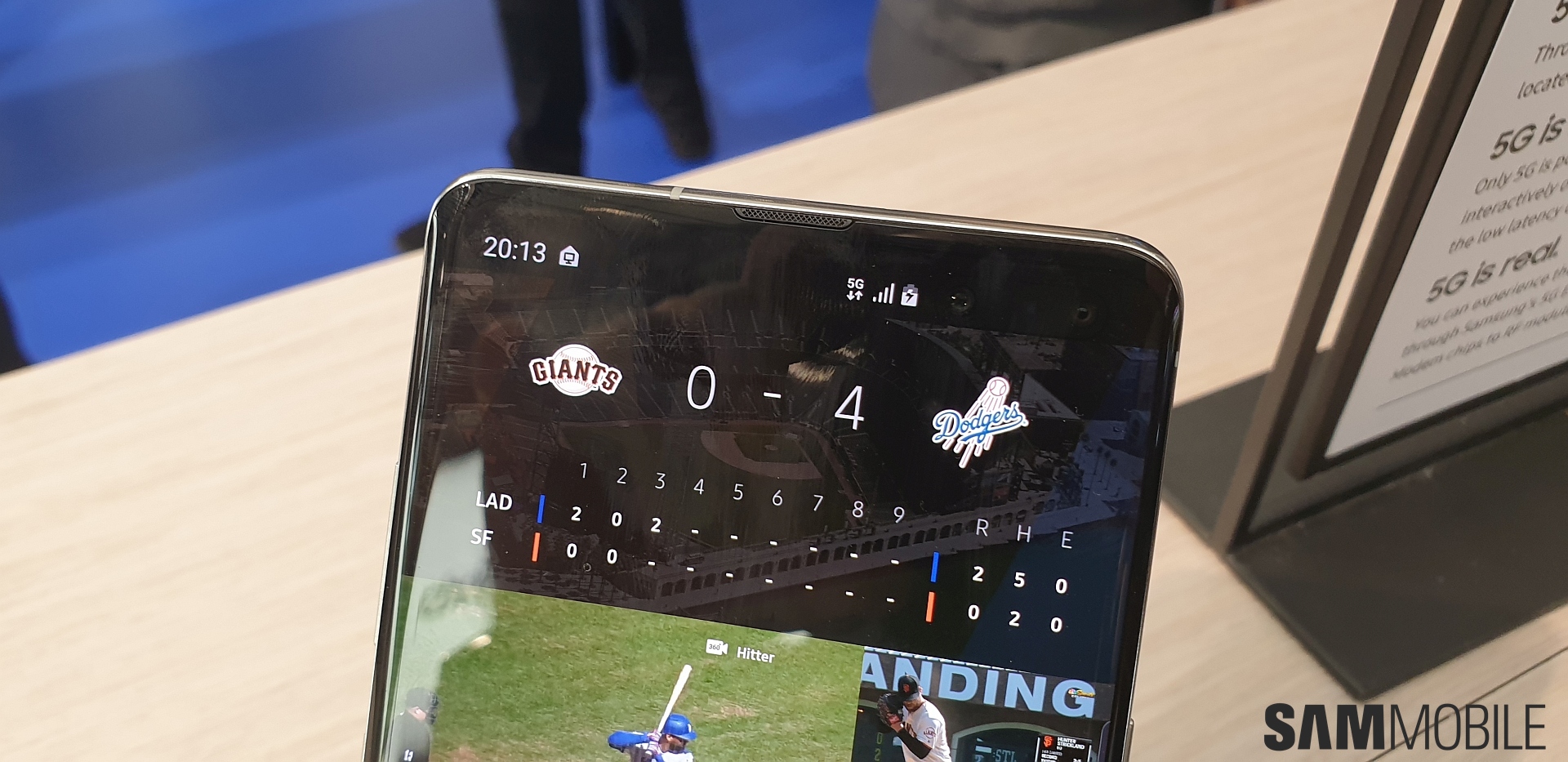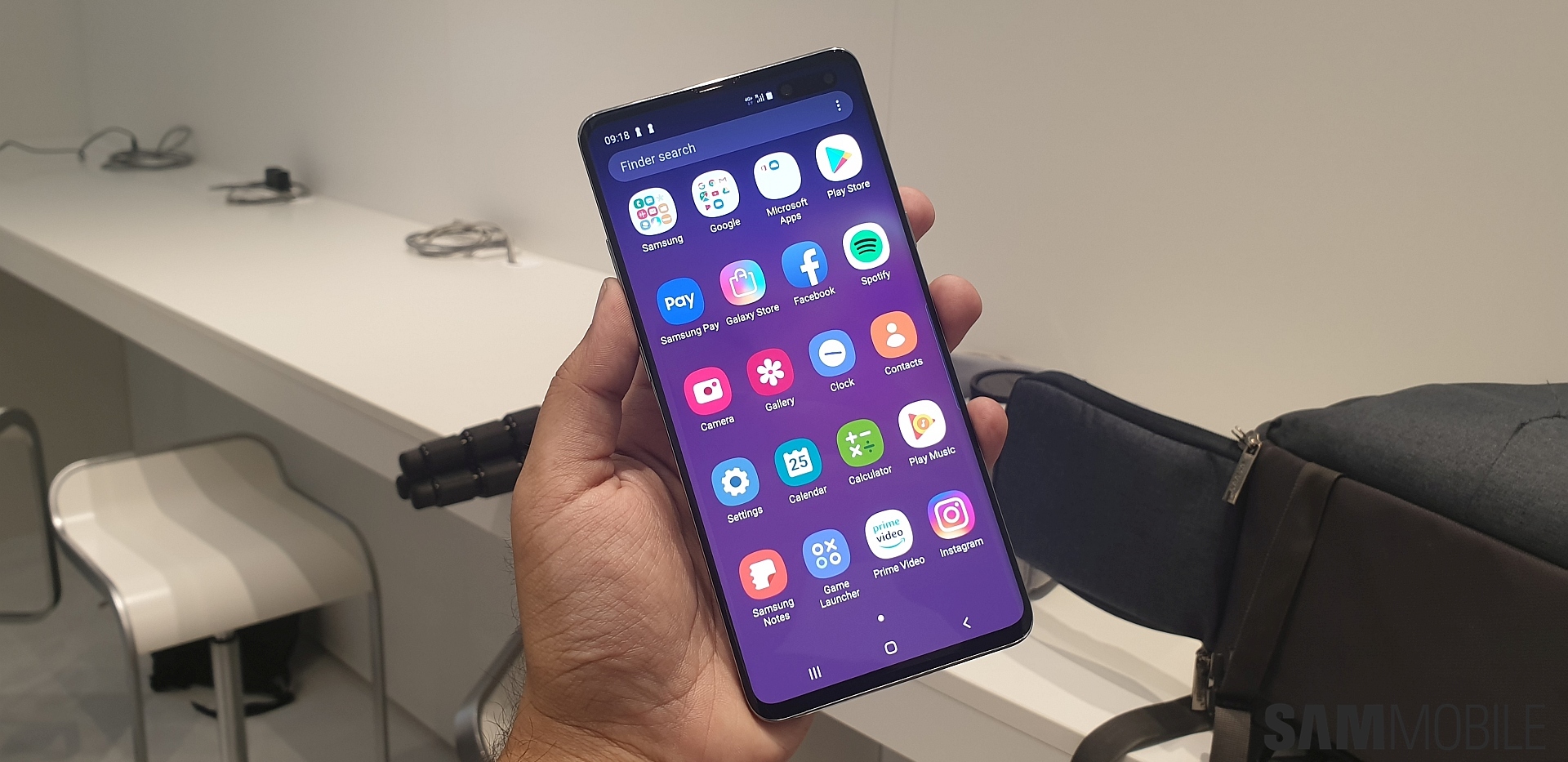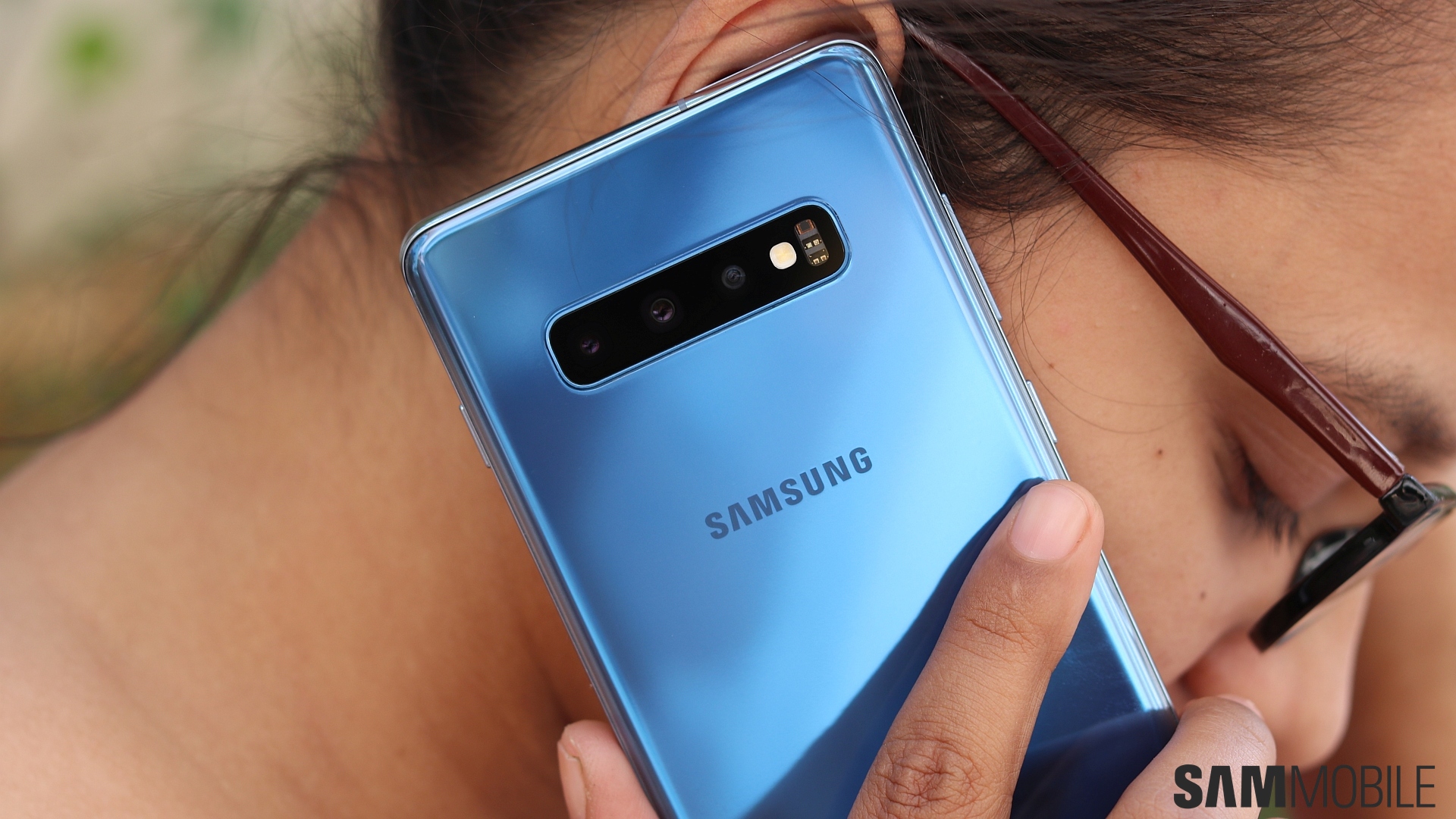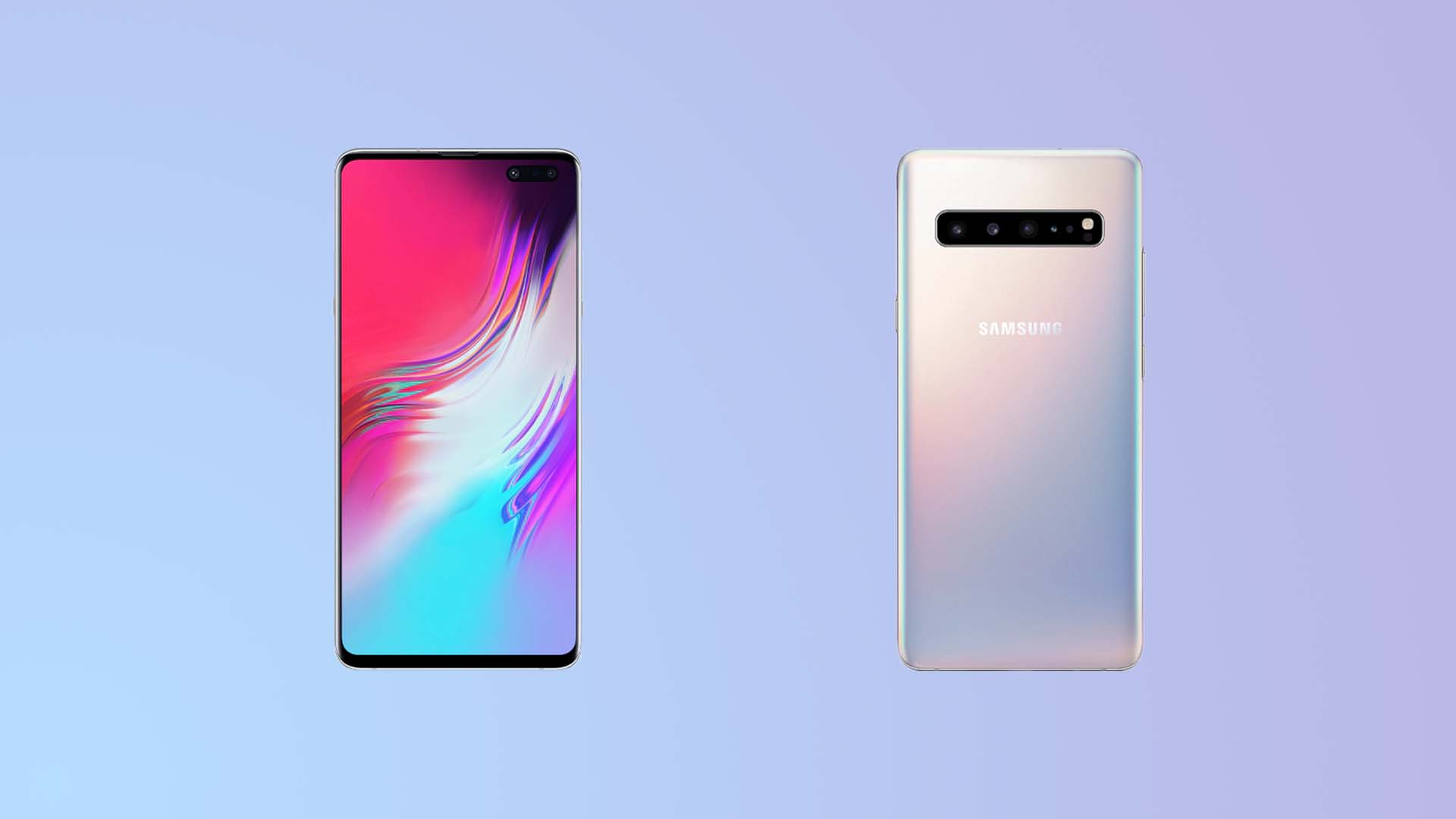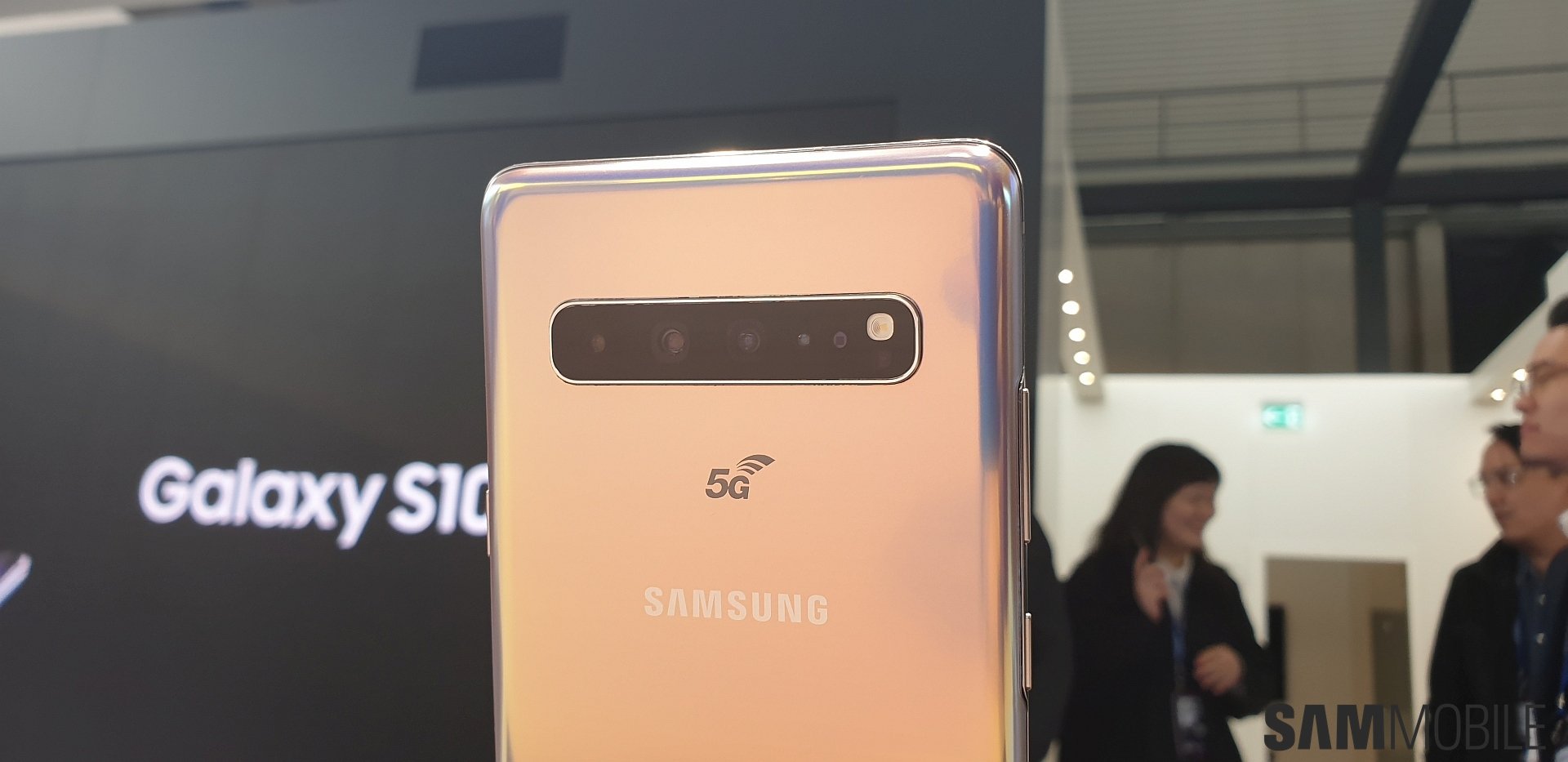
So what are the major differences? The Galaxy S10 5G has a bigger display, it has a total of six cameras, the battery is a bit bigger and you obviously get support for 5G.
Design and display
There are no significant design changes compared to the Galaxy S10+. The devices look almost the same with the only noticeable way to tell the devices apart is the slightly larger profile and the quad-camera system at the back.
The Galaxy S10 5G has one of the largest displays that Samsung has ever put on a device. The 6.7-inch Dynamic AMOLED panel is placed inside a frame that measures 162.6mm tall. Given the increased screen-to-body-ratio courtesy of the Infinity-O display, it's only marginally taller than the Galaxy Note 9 which measures 161.9mm tall.
I have been using the Galaxy Note 9 as my daily driver since it came out last year and the Galaxy S10 5G didn't feel too large or uncomfortable to hold by any stretch of the imagination. It's actually thinner than the 8.8mm Galaxy Note 9 as it measures 7.94mm despite its 4,500mah battery (and the 4,500 mAh battery supports 25W fast charging, not the 15W charging on the regular Galaxy S10s).
Few can fault larger displays on smartphones and the 6.7-inch panel on the 5G variant of the Galaxy S10 makes content consumption that much better. You might struggle to hold the device a bit if you have smaller palms, but one has to ask, would it really be that big of a difference compared to the 6.4-inch Galaxy S10+?
Camera
Samsung had to make this device worth its price tag, which is certainly going to be very high, so it gave the Galaxy S10 5G a quad camera system. It's the only one in the new lineup to have it. The first of the three cameras are the exact same ones that you get on the Galaxy S10+. They include the 12-megapixel f/1.5-f/2.4 variable aperture primary sensor, a 12-megapixel f/2.4 telephoto and a 16-megapixel f/2.2 ultra-wide sensor with a 123 degree field of view.
The fourth one is where things get interesting. It's a 3D depth-sensing camera that's also referred to as a time-of-flight camera. These sensors allow for more accurate depth sensing and the enhanced depth map allows for improved facial recognition, augmented reality, 3D imaging and other applications. The benefit that it will primarily deliver for users is by improving the background blur in the Live Focus portrait mode. The sensor also adds a Live focus video mode to the camera app which lets you adjust the background blur before capturing video.
Not content with just one 3D depth-sensing camera, Samsung also put one on the front. The Galaxy S10 5G has the same 10-megapixel Dual Pixel + 8-megapixel depth sensor on the front as the Galaxy S10+ with the time-of-flight sensor in the middle. This is the reason why the Infinity-O camera cutout appears to be more pronounced on the 5G variant, because it really is wider than the one on the Galaxy S10+.
Does the 3D camera mean we get something close to Apple's Face ID for facial recognition? Well, Samsung is only saying we get “improved facial recognition,” but even a little increase in speed over standard facial recognition may be worth it. If not, that wider front camera cutout may prove less useful than people would like it to be.
Please hold for 5G
Despite all of the 5G hype and Samsung breathlessly reminding us that it wants to lead the market in the shift to the next-generation network technology, there's little in the way of demonstrating the potential of 5G on this variant. The demo units were not hooked up to a 5G network so we couldn't experience some of that 5G goodness for ourselves. One demo unit had a baseball game streaming and the 5G logo in the status bar, but it's unclear if that model was actually using a 5G network instead of just showing us a preloaded demo.
We'll likely have to wait for this variant to hit the market, which will obviously only happen once 5G networks go live in markets like South Korea, the United States and several countries across Europe. You might notice that there's a “5G” logo at the back in some pictures. Samsung is still mulling whether or not it should add that logo on the consumer models. I was told that the global version may not have the logo.
Conclusion
It obviously doesn't make any sense to buy the Galaxy S10 5G if you live in a market where no 5G networks will be going live. If you do happen to be located in such a market and are willing to be an early adopter, you really can't go wrong with the Galaxy S10 5G. We just hope Samsung will offer some of the 5G model's hardware, such as the four rear cameras, on the standard Galaxy Note 10.
If you haven't already, don't forget to check out our hands-on experience with the Galaxy S10e, Galaxy S10, and Galaxy S10+.














